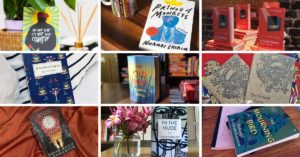When children start writing their own stories and poems, their parents start wondering how to encourage and raise them to be better writers.
Most parents want their children to learn to express their thoughts and ideas in the most imaginative way possible. As a mother and teacher, this makes perfect sense. After all, being creative and imaginative are perfectly laudable endeavors.
Helping the child improve has to be handled with utmost care. When children are enjoying the process of creating characters and making up worlds and stories, they want to feel confident and secure. Forcing ‘helpful tips’ down their throats can be counterproductive and even, discouraging. The last thing you want is to end up frustrating the child.
Teaching or coaching a child is no easy feat. So most parents choose to find a private tutor. But any DIY-enthusiast can help a creative child. You don’t need an education degree (or an MFA) to help creative children channel their newly acquired reading experience and budding writing skills into crafting a compelling tale. When I began homeschooling two preteens in creative writing, I was still earning my post graduate diploma in education. What you need, instead, is a lot of patience, grit, love and this five-step guide.
1. Make Reading A Habit
When I attended the Farafina Workshop, I observed that Chimamanda Adichie and all the other established writers and publishers harped on about the importance of reading. I think it was Chika Unigwe who said, ‘read, read, and read’.
Every time I read an author’s interview, the same tip pops up. Read a lot of well-written books and stories.
Reading is fundamental to the success of every writer. Read to your child and teach them to make reading a part of their lives. During my homeschooling days, I began most classes with a reading exercise. (When the kids were grumpy, classes started with a short game of scrabble.) I placed a lot of emphasis on read aloud and quietly, because I wanted their brains to be stimulated by the stories, the cadences of the words and the ideas. I noticed the children were eager to write their stories after a reading exercise.
After a reading session, discuss the story or novel chapter with the child. Guide the child through these discussions so that he/she understands the basic elements of the story. Talk about the characters, setting, plot and story goal (often the moral of the story). This will help the child understand how a story works.
Teach creative children to build word collections. I told the preteen writers to note down every new word they encountered at the back of their creative writing exercise books. After each reading exercise, I would ask them to decipher the meaning of the words using the context in which the word was used. Only when this didn’t work were they allowed to use a dictionary.
2. Write, Write, Write
Make sure the child has time to write every day. Create a writing space where the child can write during an agreed upon ‘creative time’.
Make a list of words that aren’t allowed in a story. I chose common, weak words for instance. The children were forbidden from using words like man, woman, boy, girl, go, went, cool, fun, said (except in a dialogue tag), nice, good, bad, fine, pretty etc. This forced the children to be more creative.
For instance, instead of writing, “The man went to the hall.” The child could write, “The retired architect drove his old Mercedes to the Enugu conference hall.”
Encourage the children to write what they know. For instance, the young writers in my class wanted to write about the snowing Christmases and pies they had read about in their novels. The stories didn’t sound authentic enough because they hadn’t tasted snow or smelled it. So I encouraged them to write about harmattan. After all, they had lived in Enugu their whole lives. They grumbled about this, in the beginning. But later, they agreed that it was easier and more fun to write about their interesting lives.
The preteens came up with more descriptive stories, which brings me to my third point.
3. Teach Your Child To Show More and Tell Less
Encourage your kids to use scenes. This is more easily done when you use picture prompts. In my class, the children learned to plan a story just from what the picture seemed to be saying. They used the 5 Ws and 1 H of journalism. In answering the who, what, where, when, why and how questions, they were able to build the skeleton of the story. I must confess that the children revolted against picture prompts when I first introduced it, but this stopped after I presented positive reinforcements.
They learned to profile their characters. They wrote about their likes, fears, strengths weaknesses and dislikes. What does each character want to accomplish? What’s standing in their way? What are they doing about it? The last question served as a guide to help them start near the point of conflict.
You can also try word prompts and other writing exercises. You can get ideas and free online resources from any reliable homeschooling website.
Another tip is to teach them to avoid adverbs. You could pin an enlarged version of this Stephen King quote on their reading shelf: “The road to hell is paved with adverbs.” But most of all, teach them to use strong and active verbs. In my classes, whenever the kids wrote, ‘she ate quickly,” I suggested, “she gobbled her meal of fried rice and plantains.”
Try playing a game of synonyms. You could write down ‘said’ and expect them to write, ‘yelled’ or ‘stuttered’ or ‘whispered’. The idea is to enrich their vocabulary and encourage them to use descriptive sentences in their scenes.
4. Points of View
Point of view was one of the first lessons I gave the preteen writers. It is very important to teach the children about the different points of view so that their stories will come out better. Give them a few short stories told from different points of view so that the children can appreciate how the narrative perspective changes. Ask the children to rewrite an old story from a different point of view.
5. Try Story Collaborations.
When writing solo becomes too tiring for the child, writer’s block can set in. A collaboration can come in handy.
Having two sisters in my writing class helped a lot. Sometimes, I sat in front of the empty page and asked them to agree on a topic and title. Then, one of them had to supply the opening sentence. Once I’d typed that in, the other child would furnish me with the next sentence. They were glad to discover that they had little control of the plot. Each child strove to make the most of every opportunity given to steer the plot in the direction she favoured. It’s a great way to get the children excited about the process of creating a new story.
It is perfectly okay for the adult in charge to join in the story collaboration. It will be a good way to bring a more mature perspective to the story. Whatever you do, try not to dominate the process. Children like to have a high level of control over their creative projects.
Story collaborations shouldn’t be done too often. It is important for children to learn how to write independently because much of creative writing is done solitarily.
6. Giving and Receiving Feedback
As children complete writing drafts, make out time to give constructive and clear feedback. This will help guide the child through the storytelling process. Good feedback highlights the commendable aspects of the creative work before dishing out corrections and pointing out flaws.
In my class, I asked the children to listen carefully while the other read. I told them to point out the things they liked about the story before they pointed out the things that needed to be improved. I encouraged them to be respectful and to avoid words like ‘I didn’t like’ this or that. Instead, they were to say, your story will read a lot better if you changed this, or rewrote that part,’ or ‘this part wasn’t clear. I wasn’t sure what you were trying to say.’ My rule was simple: point out a flawed scene or subplot you can improve.
After a while, the children learned to read like writers, to listen for tone and atmosphere and excellent characterization. This helped them improve their craft. They learned a lot from each other just by giving feedback.
Parents or tutors must focus on giving comments that only encourage excellent story writing. If you must grade drafts, focus on giving scores for completion. The child should be encouraged to finish writing every story they start. Also evaluate them based on creativity. Children like to be rewarded for pushing the boundaries and generating innovative ideas.
7. Take Them To Literary Gatherings
If your child has a favorite author, endeavor to take them to book readings or book signings when the opportunity arises. You can also seek out book events and take the child to experience other authors’ works in book readings and literary festivals. If you have a large class, you can consider inviting published writers to address your students.
Great exposure to literary events helps the child gain a certain consciousness about the literary world. In most cases, the child begins to aspire to certain literary heights. There is no better way to encourage a writer.
8. Inspire Them With Video Interviews and Writing Podcasts
In our high tech world, we have easy access to a wide range of learning resources on any subject. For a creative writing class, there are many videos and podcasts on every genre and topic. You can find a lot on YouTube and Vimeo.
Because I am more of a podcast-person. I often recommend BBC’s From Our Own Correspondents, BBC’s World Book Club, The New Yorker Fiction Podcast, Guardian Short Story Podcast, Writing Excuses, Modern Love and so on. But before you play any episode for the young writer, make sure it is age-appropriate.
Listening to radio stories teaches the importance of tone, voice, style, atmosphere and even, point of view. These are storytelling elements creative children can appreciate after a listening experience.
**************
Post image by frank mckenna via Unsplash
About the Author:
 Chioma Iwunze-Ibiam writes creative non-fiction and prose fiction. Her works have appeared in Romance Meets Life, Flash Fiction Press, MTLS, Saraba Magazine, Sentinel Magazine and others. Her first novel, Finding Love Again, was published by Ankara Press. She owns and manages Creative Writing News.
Chioma Iwunze-Ibiam writes creative non-fiction and prose fiction. Her works have appeared in Romance Meets Life, Flash Fiction Press, MTLS, Saraba Magazine, Sentinel Magazine and others. Her first novel, Finding Love Again, was published by Ankara Press. She owns and manages Creative Writing News.










Zahra Abbas April 07, 2021 14:36
I really loved the article. I am in search of a teacher who can help really teach creative writing this way. If you could really teach my girls, please let me know.